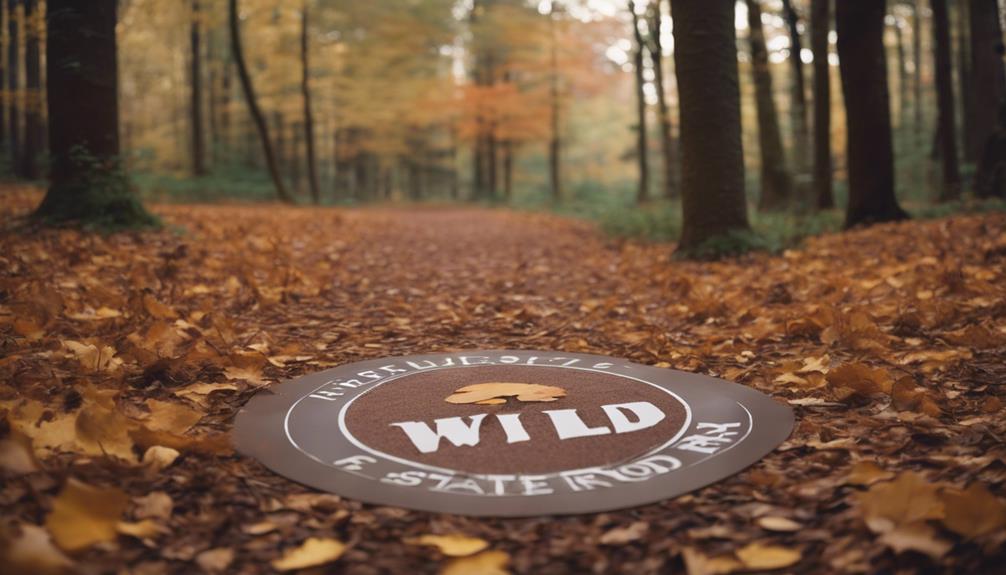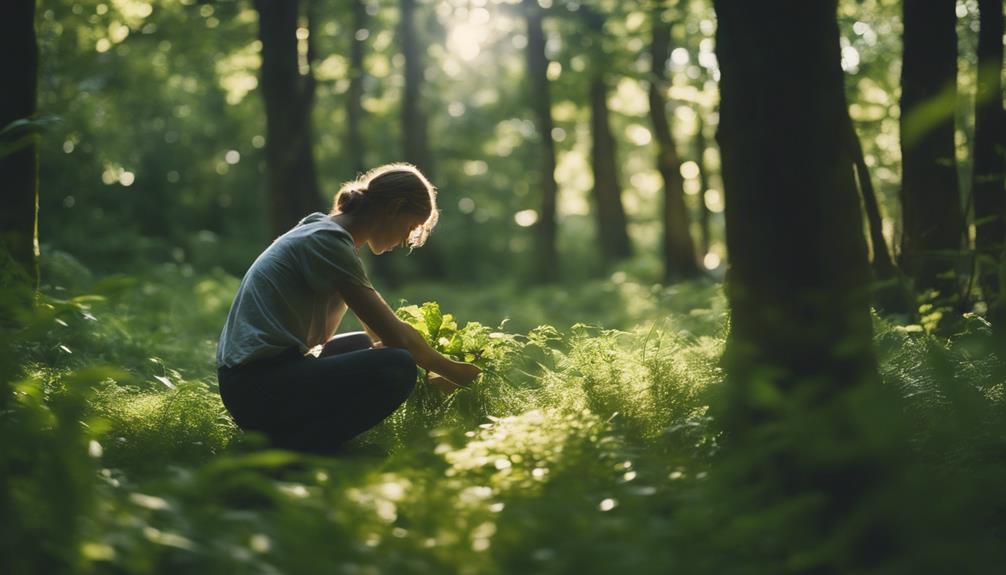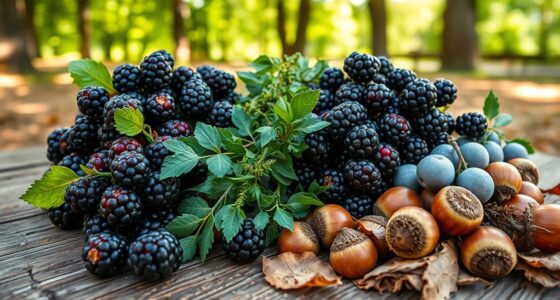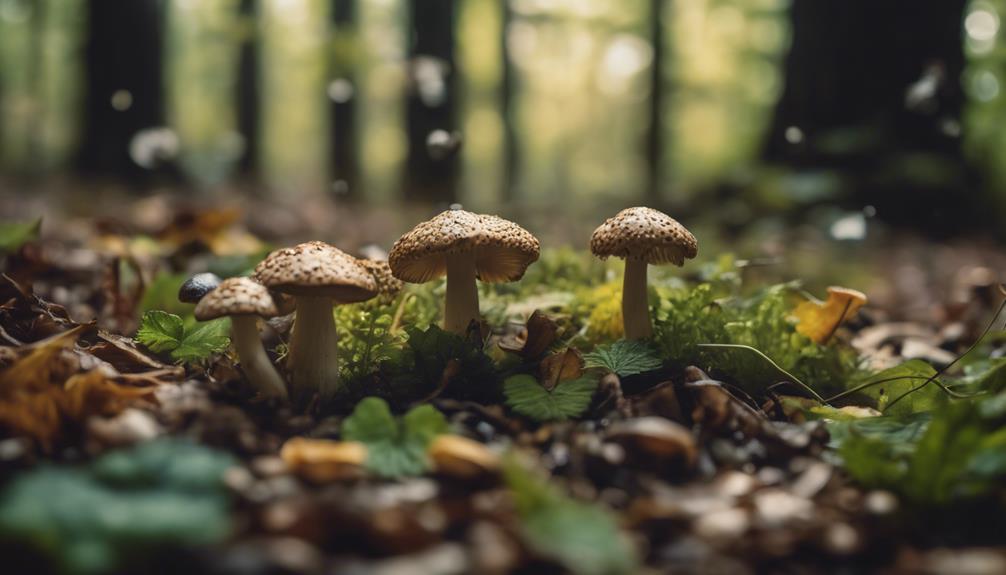You can forage for mushrooms in some state parks, but the rules vary widely from state to state. Some states offer permits for limited collections, while others restrict it entirely to protect sensitive ecosystems. Before you head out, check the specific park's website for permit requirements and regulations. Remember, permits and permissions from park authorities are required, and violating rules can result in fines. To ensure responsible foraging, consider joining a guided walk to learn about mushroom identification and conservation efforts. By understanding the rules, you can enjoy mushroom foraging while preserving the park's natural beauty, and discover more about the unique regulations and opportunities that await you.
Key Takeaways
- State park regulations on mushroom foraging vary, so research and understand the rules to avoid fines.
- Permits and permissions from park authorities are often required for mushroom collection.
- Guided walks with park rangers can provide safe and educational experiences for mushroom identification.
- Conservation and preservation efforts may restrict mushroom foraging in certain areas of state parks.
- Familiarize yourself with local regulations and follow instructions from park rangers to ensure responsible foraging practices.
Understanding State Park Regulations
When it comes to foraging for mushrooms in state parks, you'll need to navigate a complex web of regulations that vary from state to state. Researching specific park rules is important to understanding the regulations for mushroom hunting.
Some states offer permits for limited collections, but others, like Georgia, don't issue permits for mushroom foraging in their state parks.
Guided walks in state parks often focus on mushroom identification rather than harvesting, which can be a great way to learn about the different species without collecting them.
Foraging for mushrooms in national parks is generally not allowed due to preservation efforts. However, state parks may have different rules, and it's vital to familiarize yourself with the specific regulations of the park you plan to visit.
Don't assume that what's allowed in one park is allowed in another. Take the time to research and understand the rules before you head out on your mushroom foraging adventure.
Permits and Permissions Required

Before you embark on your mushroom foraging expedition in state parks, you'll need to understand the permits and permissions required. Typically, state parks don't issue permits for mushroom hunting, and you'll need to obtain permission from park authorities before you start foraging.
Understanding the rules and regulations is crucial to avoid fines or penalties, so make sure to research and comprehend what's necessary.
Permit Requirements
Before you head out to forage for mushrooms in a state park, check the park's website or contact park authorities to determine if you need a permit or permission to hunt. Some state parks require permits to guarantee sustainable harvesting practices and environmental protection. Understanding and following the permit requirements can help avoid fines or penalties while foraging in state parks.
Here's a general breakdown of what you might expect:
| State Park | Permit Requirements |
|---|---|
| Most state parks | Free permit or permission required |
| Some state parks | Paid permit required for commercial foraging |
| National forests | No permit required, but follow regulations |
| Private lands | Landowner permission required |
| Protected areas | No foraging allowed |
Remember to check the specific regulations for the state park you plan to visit. It's always better to be safe than sorry, and having the necessary permits can save you from trouble later on. By following the rules, you can enjoy mushroom foraging in state parks while also protecting the environment.
State Park Regulations
State park regulations dictate that you obtain the necessary permits and permissions before starting on a mushroom foraging adventure, maintaining a harmonious balance between nature enthusiasts and environmental conservation. Remember, regulations vary from park to park, so it's important to check with the specific state park you plan to forage in.
Some parks, like those in Georgia, don't issue permits for mushroom foraging, while others may offer guided walks focusing on identification rather than harvesting.
When you arrive at the park, follow the instructions from park rangers regarding mushroom foraging policies. State parks typically operate under a preservation model, limiting or prohibiting mushroom collection to protect the ecosystem. Don't assume you can forage freely; instead, take the time to understand the regulations in place.
Rules for Personal Use Collection

Now that you've got your permit, it's time to understand the rules for personal use collection.
You'll need to check the specific regulations for each state park, as they can vary, but generally, you'll face permit requirements and bag limits to guarantee sustainable harvesting.
Permit Requirements
You'll need to check with the park authorities to determine if a permit is required for personal use mushroom collection, as requirements vary greatly between states and parks. Some states may not offer permits for foraging, while others may have specific rules and regulations. It's important to research the policies of the state park you plan to visit to understand the permit requirements.
Here are some important points to keep in mind:
- Guided walks in state parks may focus on mushroom identification rather than collection, so be sure to check the focus of the walk before participating.
- Follow instructions from park rangers regarding foraging rules, as they can provide valuable insights and guidance.
- Researching specific state park policies is vital to understand the permit requirements for mushroom foraging.
- Some state parks may have restricted areas or seasons for foraging, so be sure to check with park authorities before heading out.
- Always prioritize sustainability and responsible foraging practices to ensure the long-term health of the park's ecosystem.
Bag Limits Apply
Before you start foraging, familiarize yourself with the daily bag limits, which dictate how many mushrooms you can collect per person, to make sure you're not over-harvesting and depleting the park's ecosystem.
These limits vary by state park, so it's vital to check the specific rules before heading out. Bag limits are in place to guarantee sustainable mushroom populations and prevent over-harvesting, allowing for responsible personal use collection.
Typically, you'll find that parks restrict the number of mushrooms you can collect per person per day. This daily limit helps maintain a healthy balance between foraging and preserving the park's ecosystem.
Understanding and adhering to these bag limits is crucial to promote responsible foraging practices in state parks. By knowing the daily limits, you can enjoy foraging while also protecting the park's natural resources.
Guided Walks for Mushroom Identification

Through guided walks, park rangers offer a safe and educational experience, teaching participants how to identify various mushroom species while exploring state parks. These guided walks are an excellent way to learn about the diverse world of mushrooms in a safe and controlled environment.
Led by experienced park rangers, you'll learn about different mushroom species, their habitats, and key identifying features.
- Imagine yourself walking through a lush forest, surrounded by towering trees and the sounds of nature, as you search for hidden gems like chanterelles or oyster mushrooms.
- Picture yourself kneeling down to examine a peculiar-looking fungus, with a park ranger guiding you through the identification process.
- Envision the thrill of discovering a rare species, with the ranger explaining its unique characteristics and habits.
- Visualize the sense of accomplishment as you learn to distinguish between edible and toxic mushrooms.
- Imagine the newfound appreciation for the natural world that comes from understanding the intricate relationships between mushrooms and their ecosystems.
Conservation and Preservation Efforts

When exploring state parks, it's important to recognize that conservation and preservation efforts are a top priority, guaranteeing the delicate balance of these ecosystems is maintained.
As you venture into these protected areas, you'll notice that mushroom foraging might be restricted in certain areas or altogether. This is because state parks prioritize conservation efforts to maintain biodiversity and prevent overharvesting.
The rules in place aim to balance recreational activities with the preservation of native species and habitats. By understanding and following state park regulations, you can ensure responsible foraging practices that align with conservation efforts.
This not only protects the environment but also ensures the long-term sustainability of mushroom foraging in state parks. By being mindful of your impact, you can contribute to the preservation of these natural wonders for future generations.
Park-Specific Foraging Rules

As you prepare to forage for mushrooms in state parks, it's vital to familiarize yourself with park-specific rules, which can vary greatly from one park to another. Before you head out on your mushroom hunting adventure, make sure you understand the unique regulations in place at your chosen park.
Here are some key things to bear in mind:
- Check if foraging is allowed: Some state parks, like Big Bend and Palo Duro, have strict rules against mushroom foraging.
- Familiarize yourself with local regulations: Foraging regulations can vary greatly from one park to another, so it's important to research and understand the specific rules of the park you plan to visit.
- Be aware of the consequences: Violating foraging regulations can result in fines or legal consequences, so it's crucial to respect and abide by the rules.
- Rangers are watching: State park rangers actively enforce rules to prevent unauthorized mushroom hunting, so don't think you can get away with breaking the rules.
- Respect the ecosystem: Remember, the primary goal of state parks is to protect the natural ecosystem, so be mindful of your impact on the environment.
Mushroom Foraging in National Parks

National Parks, with their strict preservation model, generally prohibit mushroom foraging to safeguard the delicate balance of their ecosystems. As you plan your visit, it's essential to understand that the National Park Service prioritizes preserving biodiversity, including fungi species. This means that mushroom picking is usually not allowed in these protected areas.
However, it's always a good idea to research specific park regulations, as some may have limited collection rules for personal use. Be cautious when identifying wild mushrooms in National Parks, as toxic lookalikes can be present.
Instead of foraging, consider joining guided walks that focus on mushroom identification rather than collection. These walks can be an excellent way to learn about the diverse fungi species found in these parks without disrupting the ecosystem.
Private Property Foraging Regulations

When you're looking to forage for mushrooms on private property, remember that you'll need to get permission from the landowner first. Without their approval, you'll be trespassing, which can lead to legal issues.
Landowner Permission Required
By venturing onto private property to forage for mushrooms, you must first obtain permission from the landowner to avoid potential legal issues. As a mushroom enthusiast, it's important to respect private property rights and obtain explicit consent before foraging. This is vital because landowners have the right to forage on their property, but visitors must get permission.
Here are some key points to keep in mind:
- Private property offers the highest potential for abundant mushrooms with less competition from other foragers.
- Contacting the landowner directly is necessary for gaining permission to forage for mushrooms.
- Respect for private property rights is significant when engaging in mushroom foraging activities.
- You must obtain explicit consent from the landowner before foraging on their property.
- Failure to obtain permission can lead to legal issues, so it's always better to err on the side of caution.
Trespassing Laws Apply
You'll need to be aware that trespassing laws apply to private property within state park boundaries, and foraging for mushrooms on these lands can lead to legal consequences if you haven't obtained the necessary permissions. As a mushroom hunter, it's important to understand that state parks prioritize conservation efforts, which often limit foraging activities.
When venturing into state parks, you must respect private property boundaries, as trespassing can result in fines or legal consequences. Remember, mushroom foraging on private property within state park boundaries is subject to regulations.
Before planning your trip, check specific state park policies and regulations regarding mushroom foraging to avoid any legal issues. Don't assume that just because you're in a state park, you have free rein to forage for mushrooms. Be aware of the rules and respect private property to guarantee a safe and enjoyable experience for yourself and others.
Prior Approval Necessary
Before venturing into private property for mushroom foraging, secure prior approval from the landowner, as they've the freedom to forage on their property without restrictions. You'll need to contact the landowner directly to obtain permission for mushroom hunting, ensuring you respect their private property rights. This is essential, as private property offers the highest potential for finding abundant mushrooms with less competition.
Here's what you should keep in mind when foraging on private property:
- Private property means private rules: Landowners can set their own regulations, so be prepared to adapt to their guidelines.
- Get permission in writing: A verbal agreement may not be enough; get written permission to avoid any disputes.
- Respect the land and the landowner: Leave the property in the same condition as you found it, and be respectful of the landowner's time and property.
- Be prepared to share: Landowners may request a portion of your mushroom haul as compensation for allowing you to forage on their property.
- Don't assume: Never assume you have permission to forage on private property; always ask and receive approval before heading out.
National Forest Mushroom Foraging

Venture into national forests like Angelina and Caddo in Texas, where mushroom foraging is legally permitted, and you'll find a treasure trove of fungi waiting to be discovered.
As you begin your mushroom foraging adventure, bear in mind that regulations on mushroom quantities and permits may vary in different national forests. Researching specific rules before you head out is crucial.
Some national forests require permits for mushroom picking, while others allow limited collection for personal use. To guarantee the long-term health of these ecosystems, sustainable harvesting practices are encouraged.
This involves being mindful of the quantity you collect, avoiding over-harvesting, and leaving some for other foragers and the forest ecosystem. By following these guidelines, you'll not only enjoy a successful foraging trip but also help preserve these national treasures for future generations.
Remember to always prioritize sustainable mushroom foraging practices in national forests, and you'll be rewarded with a bountiful harvest.
When in Doubt, Ask Authorities

When mushroom foraging in state parks, confirming the rules with authorities is vital, as regulations can vary greatly from one park to another. You don't want to accidentally forage in a protected area or over-harvest, which could lead to fines or even park closures.
To avoid any potential issues, it's important to consult with park authorities before you start foraging. They can provide you with valuable insights on:
- Whether mushroom foraging is allowed in the park
- Any permits or permissions required
- Quantity limits to guarantee sustainable harvesting
- Seasonal restrictions to protect sensitive ecosystems
- Specific areas open or closed to foraging
Frequently Asked Questions
What Are the Rules for Mushroom Foraging?
You need to know the rules for mushroom foraging, and it's not a one-size-fits-all answer. You'll have to check with each state park for their specific regulations, as they vary, and violating them can result in fines or penalties.
Is It Legal to Pick Mushrooms in National Parks?
As you venture into the serene wilderness of National Parks, you'll find that, sadly, mushroom foraging is generally off-limits to preserve the delicate ecosystem, but some parks may allow limited collection with strict regulations in place.
Can You Take Mushrooms From a Park?
You're wondering if you can take mushrooms from a park, but unfortunately, it's usually not allowed to preserve the ecosystem, and you might face fines if you violate the rules, so it's best to check with park authorities first.
Can You Forage in Local Parks?
You can forage in local parks, but check the rules first, as regulations vary by park and state. Some allow limited foraging with permits, while others prohibit it, so always follow park guidelines and ranger instructions.
Conclusion
As you venture into the world of mushroom foraging, coincidentally, you're likely to stumble upon a state park.
But before you start searching for those prized fungi, remember to check the regulations. It's surprising how many foragers assume it's a free-for-all, only to find themselves in hot water.
Don't be that person. Take the time to understand the rules, get the necessary permits, and respect the land. Remember, not only is it about preserving nature, but also about ensuring the safety and legality of your actions. Many areas have specific foraging rules on public land designed to protect ecosystems and prevent over-harvesting. By adhering to these guidelines, you contribute to sustainable practices that keep natural resources available for future generations. Foraging on public land can be a rewarding experience, but it’s essential to leave no trace and be mindful of the impact your actions might have on the environment. Harvest only what you need and avoid taking from endangered or protected species. This way, you help ensure that foraging on public land can remain a sustainable and responsible activity for years to come.
Happy foraging!










